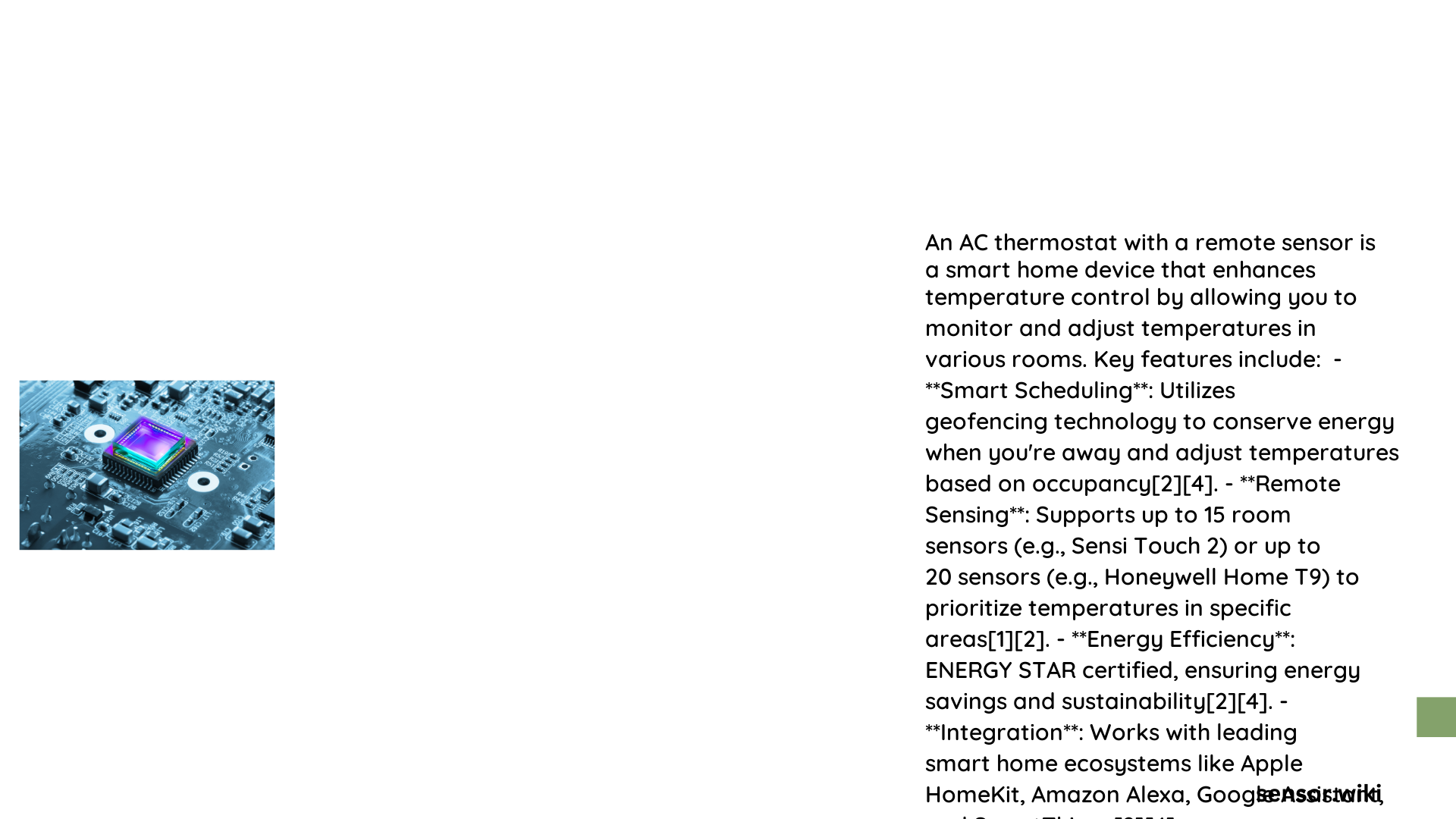An AC thermostat with remote sensor represents an advanced temperature management solution that enables precise climate control by measuring temperatures from multiple locations within a home or office. These intelligent systems allow homeowners to optimize comfort and energy efficiency by capturing temperature readings from strategic points, ensuring more accurate and responsive environmental regulation beyond traditional single-point measurement approaches.
What Makes AC Thermostat with Remote Sensor Unique?
How Do Remote Sensors Enhance Temperature Control?
Remote sensors transform traditional thermostat functionality by providing multi-zone temperature monitoring. Unlike conventional systems that measure temperature at a single point, these advanced devices capture readings from different rooms, enabling more nuanced and personalized climate management.
Key Benefits of Remote Sensor Technology
- Precise Temperature Mapping
- Enhanced Energy Efficiency
- Customized Comfort Zones
- Reduced HVAC Strain
What Are the Installation Requirements?
Essential Tools for Setup
| Tool | Purpose |
|---|---|
| Drill | Creating mounting holes |
| Wire Strippers | Preparing sensor cables |
| Screwdriver | Securing components |
| Pencil | Marking installation points |
Crucial Installation Steps
- Power Disconnection
- Always disconnect electrical power before beginning installation
-
Verify circuit breaker is switched off
-
Cable Selection
- Use CAT5 or CAT5e unshielded cable
- Maximum cable length: 300 feet
-
Maintain minimal cable hole size
-
Sensor Placement Considerations
- Avoid direct sunlight exposure
- Select areas with consistent airflow
- Keep away from heat sources
- Mount at standard room height
How Do Remote Sensors Improve Energy Management?
Remote sensors contribute significantly to energy conservation by:
- Identifying temperature variations across different zones
- Preventing unnecessary HVAC system cycling
- Enabling targeted heating and cooling
- Reducing overall energy consumption
What Technical Specifications Matter?
Compatibility Factors
- Voltage Requirements: Typically 24VAC
- HVAC System Types:
- Ducted systems
- Open return-air plenum configurations
- Single-stage and multi-stage systems
Performance Metrics
- Temperature Accuracy: ±0.5°F
- Transmission Range: Up to 300 feet
- Response Time: Less than 2 minutes
What Brands Offer Reliable Remote Sensor Thermostats?
Top manufacturers include:
– Nest
– Ecobee
– Honeywell
– Daikin
– Braeburn
Troubleshooting Common Remote Sensor Challenges
Potential Issues and Solutions
- Inaccurate Temperature Readings
- Verify sensor placement
- Check for nearby interference sources
-
Recalibrate sensor settings
-
Communication Disruptions
- Inspect cable connections
- Test cable integrity
- Ensure proper signal path
Advanced Features to Consider
- Smart home integration
- Humidity monitoring
- Mobile app control
- Learning algorithms
- Geofencing capabilities
Conclusion

An AC thermostat with remote sensor represents a sophisticated approach to home climate management, offering unprecedented control and efficiency. By understanding installation procedures, technical specifications, and strategic implementation, homeowners can transform their living spaces into precisely regulated environments.
